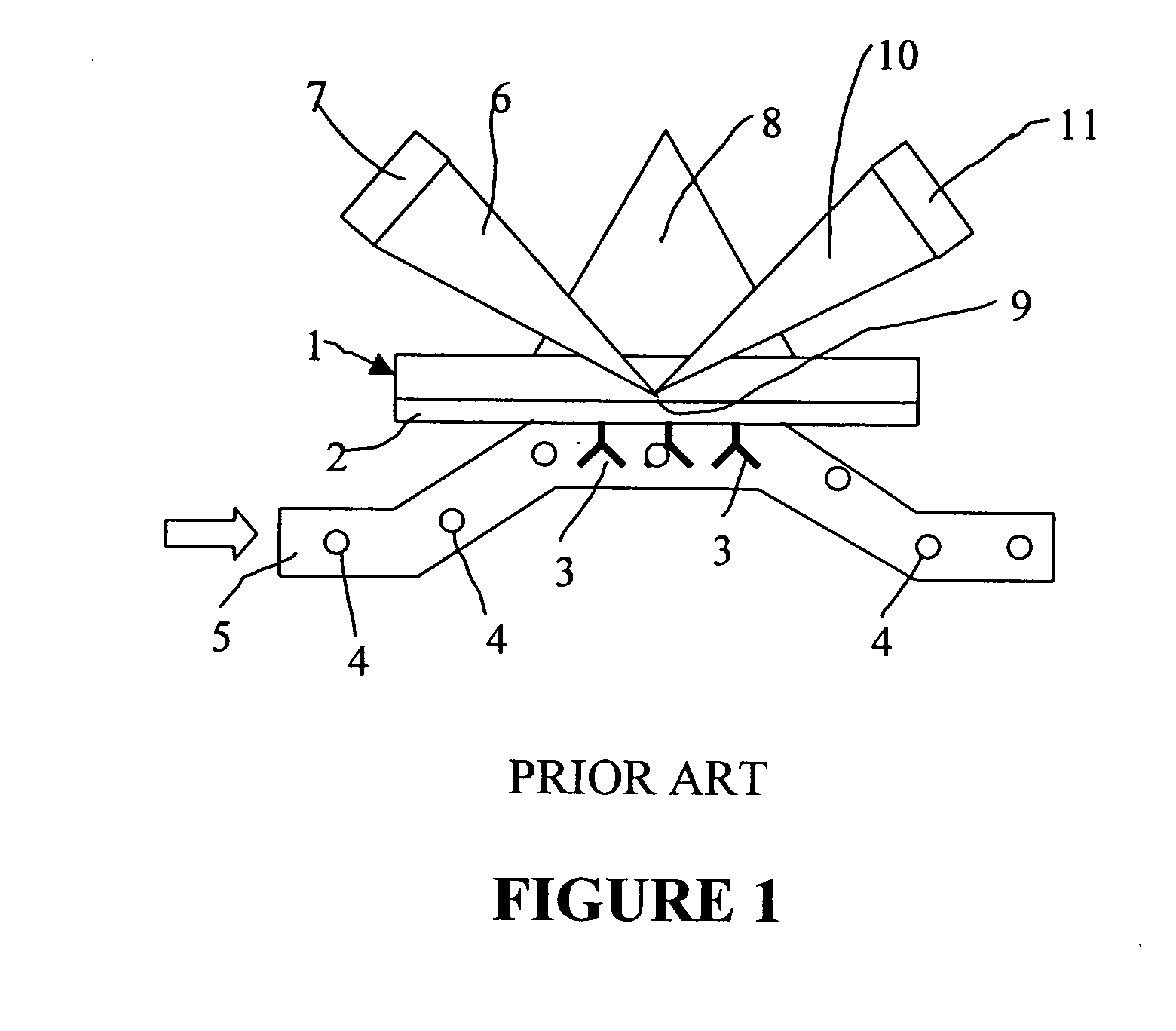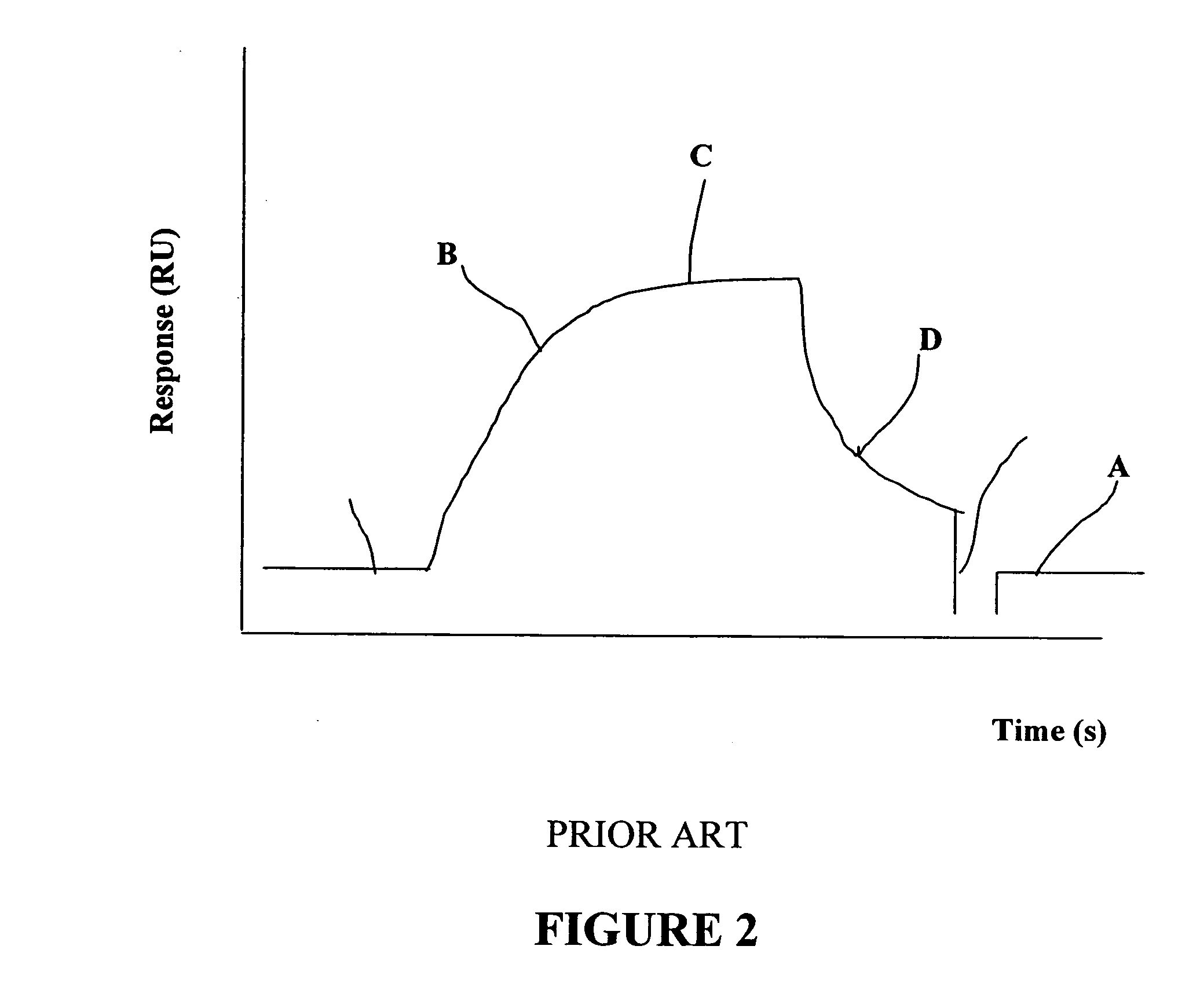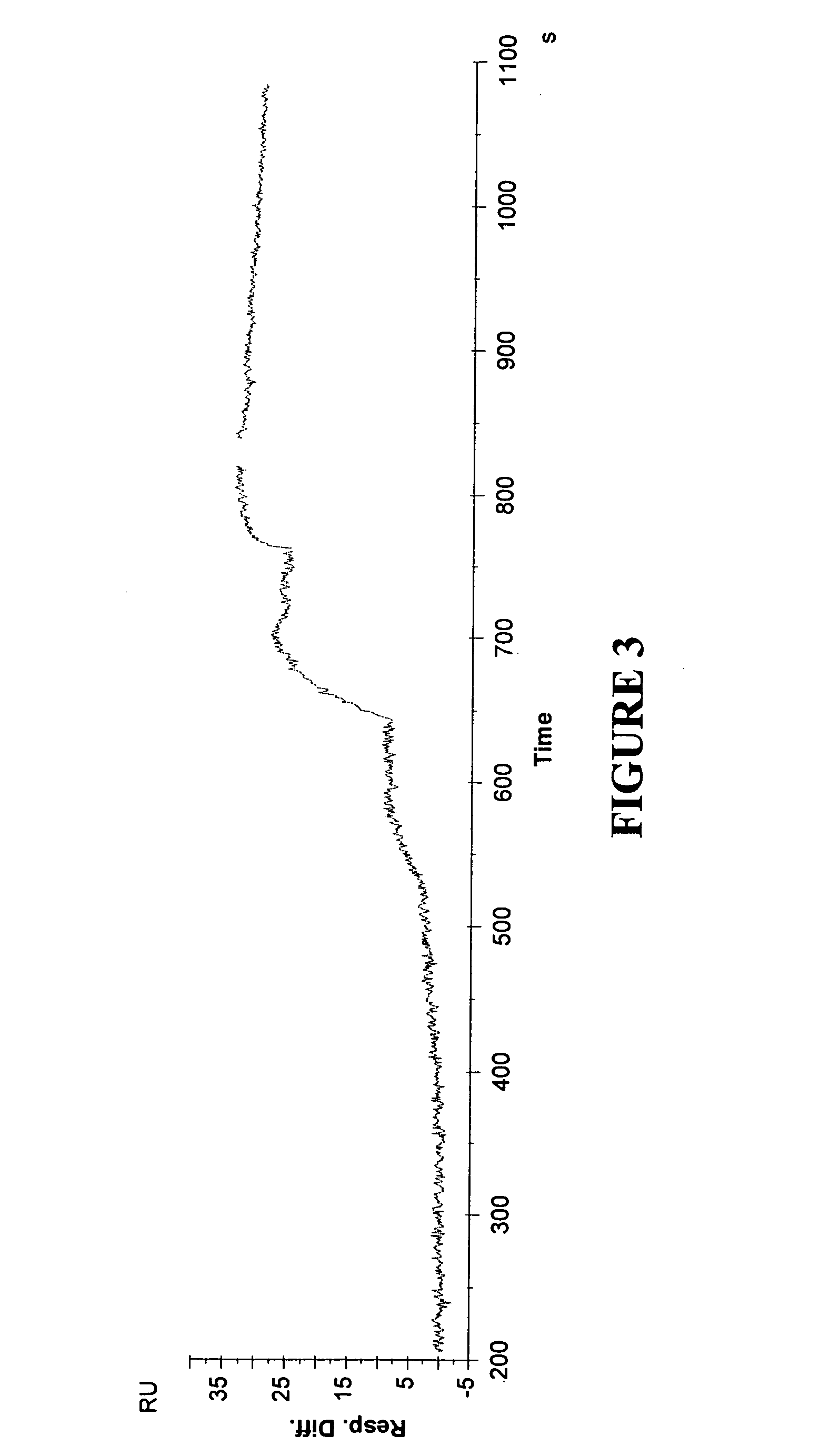Method and system for determination of molecular interaction parameters
a molecular interaction and parameter technology, applied in the direction of analyte processes, laboratory glassware, instruments, etc., can solve the problems of difficult to find suitable regeneration conditions, disadvantage of large amounts of ligands used in determination, and limitation that it requires the use of a continuous gradient of analy
- Summary
- Abstract
- Description
- Claims
- Application Information
AI Technical Summary
Problems solved by technology
Method used
Image
Examples
example 1
Binding of a Kinase Inhibitor to Immobilized Kinase
Anti-histidine antibody (Qiagen 34660; Qiagen, Venlo, Netherlands) was diluted to 20 μg / ml in 10 mM acetate buffer pH 5.0, and 13000 RU of antibody was immobilized to a Series S Sensor Chip CM5 using amine coupling (Amine Coupling Kit—Biacore AB, Uppsala, Sweden) according to the manufacturer's instructions. The flow was 10 μl / min. Histidine tagged kinase (proprietary) was then captured and cross-linked to the sensor chip surface by injecting 30 μg / ml of the kinase in 10 mM PBS for three minutes followed by 2.5 min injections of EDC / NHS and ethanolamine to stabilise the kinase on the surface. With this procedure 4000 RU of kinase were immobilized.
A kinase inhibitor, staurosporin, was injected at concentrations of 80, 240, 730 and 2200 nM at a flow of 30 μl / min. The assay buffer was 50 mM Tris pH 7.5, 150 mM NaCl, 10 mM MgCl2 and 3% DMSO. Overlay plots of observed and fitted data for the injection sequence are demonstrated in FIG...
example 2
Binding of a Set of Carbonic Anhydrase Inhibitors to Immobilized Carbonic Anhydrase
Carbonic anhydrase (Sigma C3640), 20 μg / ml in 10 mM acetate buffer pH 5.0, was immobilized to a Series S Sensor Chip CM5 using amine coupling according to the manufacturer's instructions (flow 10 μl / min), to obtain sensor surfaces with approximately 2000 and 700 RU, respectively, of immobilized carbonic anhydrase. Kinetic analysis was performed by injecting inhibitors in 10 mM PBS buffer with 0.005% P20 and 5% DMSO at a flow of 30 μl / min. The inhibitors were acetazoleamide (Sigma A6011), azosulfamide (Sigma A2759), and benzenesulfonamide (Aldrich 10,814-6). Overlay plots demonstrating observed and fitted data for the two ligand densities are presented in FIG. 7 (acetazoleamide), FIG. 8 (azosulfamide) and FIG. 9 (benzenesulfonamide). In FIG. 7, data represent two repeats on each ligand density, and ka was calculated to 1,8*106 M−1 s−1, and kd to 4,0*10−2 s−1. In FIG. 8, ka was calculated to 2,9*104 M...
example 3
Binding of a High Affinity Inhibitor to Immobilized Thrombin
Thrombin (Sigma T 1063), 20 μg / ml in 10 mM acetate buffer pH 5.0, was immobilized to a Series S Sensor Chip CM5 using amine coupling according to the manufacturer's instructions (flow 10 μl / min), resulting in sensor surfaces with approximately 2300 and 600 RU, respectively, of immobilized thrombin. Kinetic analysis was performed by injecting a high affinity thrombin inhibitor, melagatran (a gift from Johanna Deinum, AstraZeneca, Mölndal, Sweden), in 10 mM PBS buffer with 0.005% P20, 5% DMSO and 3.4 mM EDTA at a flow of 30 μl / min. Overlay plots demonstrating observed and fitted data are presented in FIG. 10. The calculated ka was 2,0*107 M−1 s−1, and kd 1,8*10−2 s−1.
Examples 1 to 3 above demonstrate that a wide range of rate constants can be determined with the sequential injection procedure. In these Examples ka values range from 2,9*104 to 2,0*107 M−1 s−1 and kd values range from 0,14 to 6,6 10−4 s−1. The Examples also...
PUM
| Property | Measurement | Unit |
|---|---|---|
| concentrations | aaaaa | aaaaa |
| volume | aaaaa | aaaaa |
| concentration | aaaaa | aaaaa |
Abstract
Description
Claims
Application Information
 Login to View More
Login to View More - R&D
- Intellectual Property
- Life Sciences
- Materials
- Tech Scout
- Unparalleled Data Quality
- Higher Quality Content
- 60% Fewer Hallucinations
Browse by: Latest US Patents, China's latest patents, Technical Efficacy Thesaurus, Application Domain, Technology Topic, Popular Technical Reports.
© 2025 PatSnap. All rights reserved.Legal|Privacy policy|Modern Slavery Act Transparency Statement|Sitemap|About US| Contact US: help@patsnap.com



